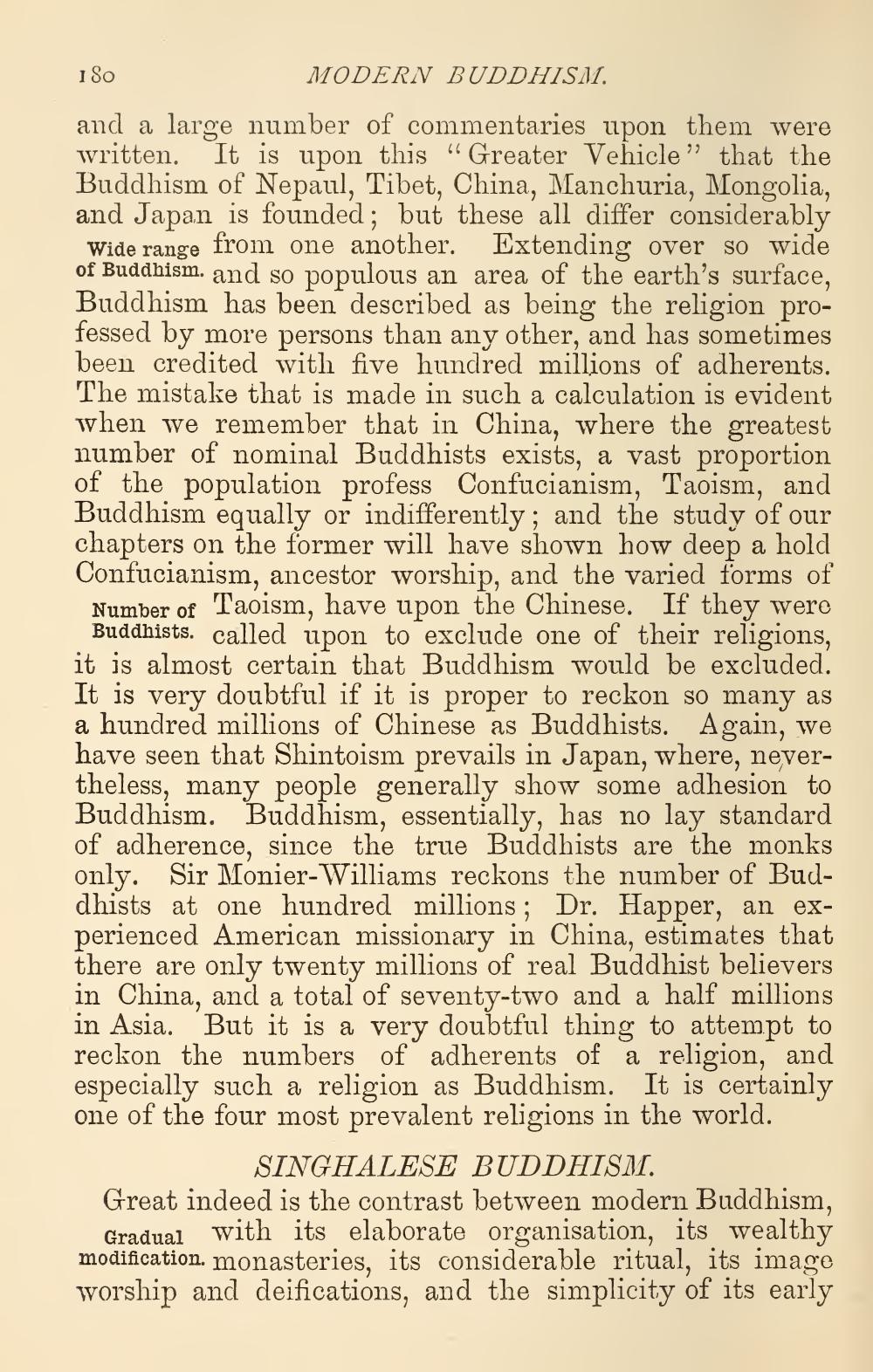________________
1 So
MODERN BUDDHISM.
and a large number of commentaries upon them were written. It is upon this “Greater Vehicle” that the Buddhism of Nepaul, Tibet, China, Manchuria, Mongolia, and Japan is founded; but these all differ considerably Wide range from one another. Extending over so wide of Buddhism. and so populous an area of the earth's surface, Buddhism has been described as being the religion professed by more persons than any other, and has sometimes been credited with five hundred millions of adherents. The mistake that is made in such a calculation is evident when we remember that in China, where the greatest number of nominal Buddhists exists, a vast proportion of the population profess Confucianism, Taoism, and Buddhism equally or indifferently; and the study of our chapters on the former will have shown how deep a hold Confucianism, ancestor worship, and the varied forms of Number of Taoism, have upon the Chinese. If they were Buddhists. called upon to exclude one of their religions, it is almost certain that Buddhism would be excluded. It is very doubtful if it is proper to reckon so many as a hundred millions of Chinese as Buddhists. Again, we have seen that Shintoism prevails in Japan, where, nevertheless, many people generally show some adhesion to Buddhism. Buddhism, essentially, has no lay standard of adherence, since the true Buddhists are the monks only. Sir Monier-Williams reckons the number of Buddhists at one hundred millions; Dr. Happer, an experienced American missionary in China, estimates that there are only twenty millions of real Buddhist believers in China, and a total of seventy-two and a half millions in Asia. But it is a very doubtful thing to attempt to reckon the numbers of adherents of a religion, and especially such a religion as Buddhism. It is certainly one of the four most prevalent religions in the world.
SINGHALESE BUDDHISM. Great indeed is the contrast between modern Buddhism,
Gradual with its elaborate organisation, its wealthy modification. monasteries, its considerable ritual, its image worship and deifications, and the simplicity of its early




